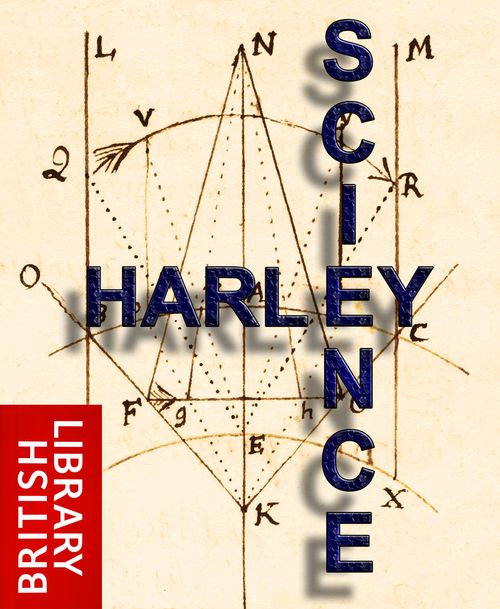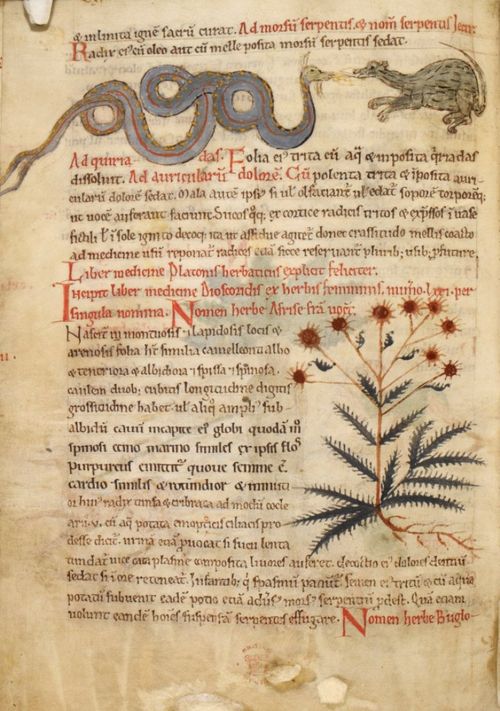
Pseudo-Dioscorides, Liber medicinae ex herbis femininis (London, British Library, MS Harley 5294, f. 43v).
We are delighted to announce that the remaining manuscripts in our Harley Science Project have now been published to the British Library's Digitised Manuscripts site. All 150 manuscripts in this project have been digitised and recatalogued thanks to the generosity of William and Judith Bollinger. We hope that this resource, part of our ongoing campaign to make our collection items more accessible, will promote new research into the books in question. Many of the texts featured in this project are by authors (such as Aristotle, Bede, Roger Bacon and Thomas Hobbes) who stood at the forefront of antique, medieval and early modern scientific discovery; and we hope sincerely that they would have approved of our mission to make their works more widely available.
Harley 13 Scientific miscellany (England, 13th-16th century)
Harley 524 Collection of sermons and theological tracts, with medical additions (England, 13th century)
Harley 1602 Miscellany including medical treatises, alchemical recipes and charms (England, 14th-17th century)
Harley 2510 Miscellany of texts on rhetoric, astrology and mathematics (Italy and France, 12th-13th century)
Harley 2686 Isidore of Seville, Etymologiae (France, 9th century)
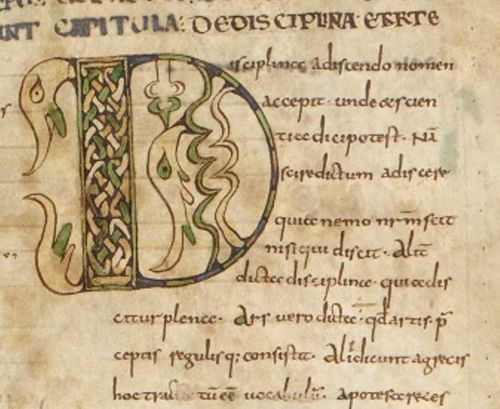
Isidore of Seville, Etymologiae (London, British Library, MS Harley 2686, f. 5r).
Harley 3334 Rolandus Capellutus Parmensis, De chirurgia (England, 14th century)
Harley 3353 Miscellany relating to medicine, alchemy and mathematics (England, 13th-14th century)
Harley 3698 Bernardus de Gordonio, Practica dicta Lilium medicine (France, 14th century)
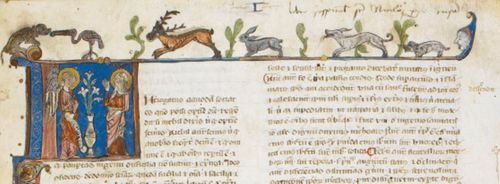
Bernardus de Gordonio, Practica dicta Lilium medicine (London, British Library, MS Harley 3698, f. 1r).
Harley 3744 Avicenna, Canon Medicinae (Italy and Germany?, 14th-15th century)
Harley 3745 Medical miscellany (France, 14th century)
Harley 3748 Galen, Opera (France or Italy, 14th-15th century)
Harley 3757 Avicenna, Canon Medicinae (Italy, 14th-15th century)
Harley 3799 Jacques Despars, Commentary on Avicenna, Canon Medicinae, volume 1 (France, 1475)
Harley 3800 Jacques Despars, Commentary on Avicenna, Canon Medicinae, volume 4 (France, 1475)
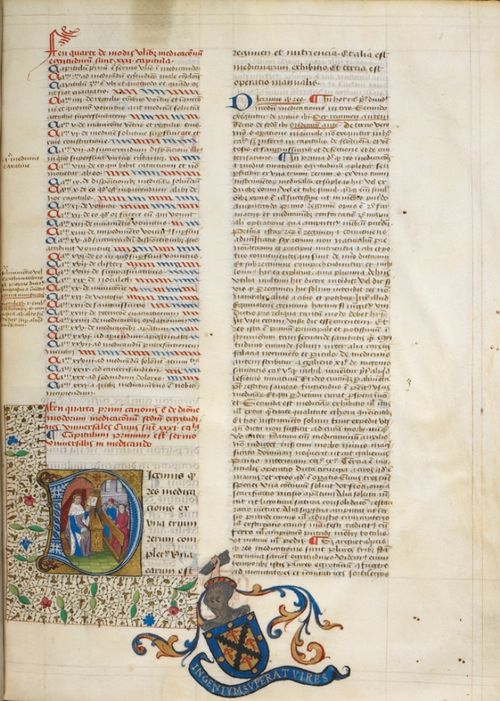
Jacques Despars, Commentary on Avicenna, Canon Medicinae (London, British Library, MS Harley 3800, f. 1r).
Harley 3801 Jacques Despars, Commentary on Avicenna, Canon Medicinae, volume 2 (France, 1475)
Harley 3802 Jacques Despars, Commentary on Avicenna, Canon Medicinae, volume 3 (France, 1475)
Harley 3803 Jacques Despars, Commentary on Avicenna, Canon Medicinae, volume 5 (France, 1475)
Harley 3804 Jacques Despars, Commentary on Avicenna, Canon Medicinae, volume 6 (France, 1475)
Harley 3805 Jacques Despars, Commentary on Avicenna, Canon Medicinae, volume 7 (France, 1475)
Harley 3806 Jacques Despars, Commentary on Avicenna, Canon Medicinae, volume 8 (France, 1475)
Harley 3807 Jacques Despars, Commentary on Avicenna, Canon Medicinae, volume 9 (France, 1475)
Harley 3808 Jacques Despars, Commentary on Avicenna, Canon Medicinae, volume 10 (France, 1475)
Harley 3809 Jacques Despars, Commentary on Avicenna, Canon Medicinae, volume 11 (France, 1475)
Harley 3812 Physician's folding almanac (England, c. 1463)
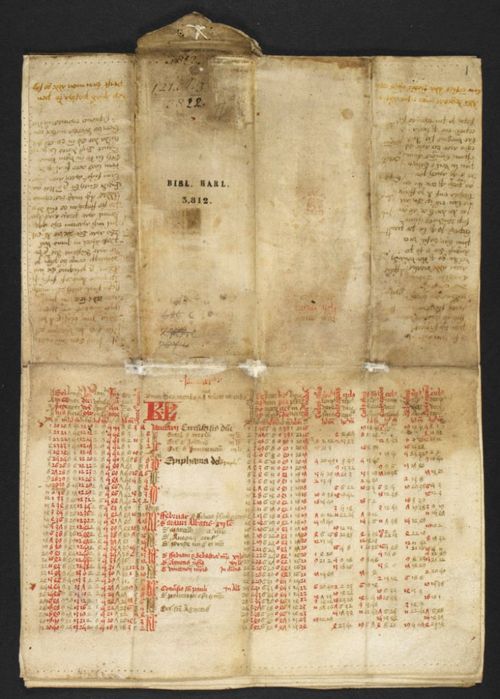
Physician's folding almanac (London, British Library, MS. Harley 3812, f. 1r).
Harley 3814A Astronomical and astrological miscellany (France and England, 13th-14th century)
Harley 3814B Prayer book (Italy, 15th century)
Harley 3843 Computistical miscellany including texts relating to medicine (England, 15th century)
Harley 3849 Medical miscellany (Germany and France, 13th century)
Harley 3892 Miscellaneous texts on rhetoric, grammar, geometry and divination (Italy, 1400-1454)
Harley 3915 Collection of chemical, alchemical and medical recipes, and texts on the techniques and technology of various arts (Germany, 1200-1444)
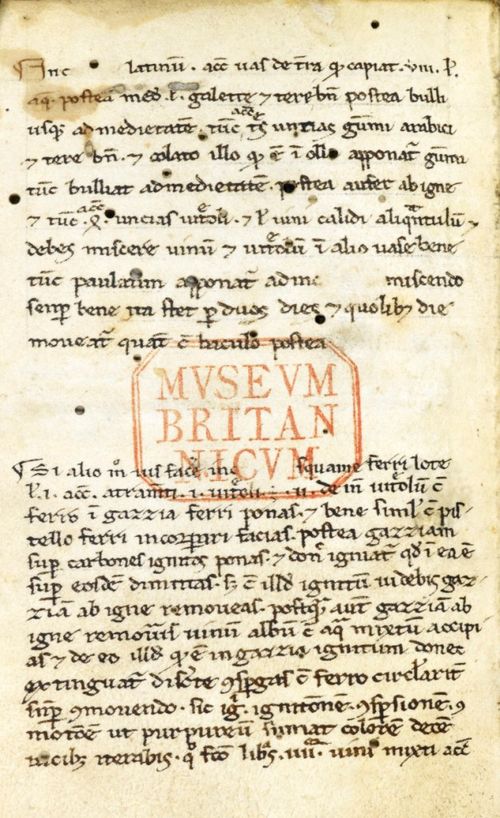
Recipes for making ink (London, British Library, MS Harley 3915, f. 148v).
Harley 3969 Works on history, natural history and rhetoric (England, 14th century)
Harley 4114 Jacques Despars, Commentary on Avicenna, Canon Medicinae (France, 1486)
Harley 4235 Thomas Hobbes, The Elements of Law, Natural and Politic (England, 1640)
Harley 4236 Thomas Hobbes, The Elements of Law, Natural and Politic (England, 1640)
Harley 4241 Aristotle, Metaphysica (Germany, c. 1450-1464)
Harley 4346 Medical miscellany (Germany, 12th century)
Harley 4347 The Aphorisms of Hippocrates and other maxims (Ireland, 16th century)
Harley 4350 Astronomical miscellany (France, 13th century)
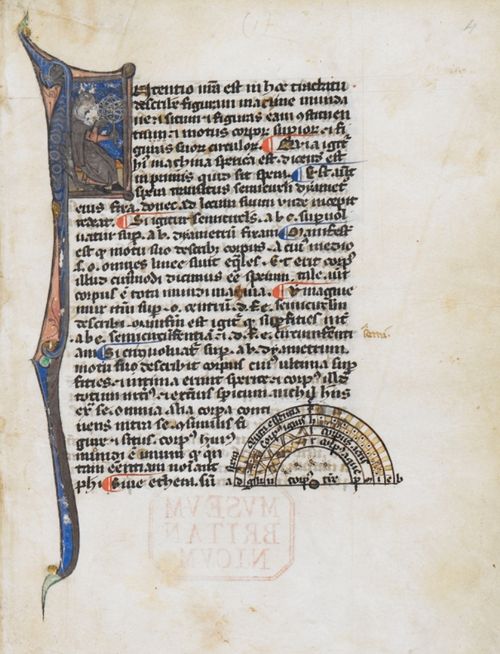
Robert Grosseteste, De sphera (London, British Library, MS Harley 4350, f. 4r).
Harley 4361 Livre de Sydrac (Italy or France, 13th century)
Harley 4486 A treatise on alchemy and medicine, and the Livre de Sydrac (France? and England, 1350-1631)
Harley 4735 Commentary on Aristotle, Physica; Nicolaus Lakmann, Formalitates (England, 15th century)
Harley 4924 Thomas Osborne, Treatise on arithmetic (England, 1601-1602)
Harley 4970 Aristotle, De animalibus (England, 13th century)
Harley 4973 Jordanus de Nemore, De elementis arismetica artis (France or England, 13th century)
Harley 4977 Medical compendium (France or England, 12th century)
Harley 4982 Constantinus Africanus, Theorica Pantegni (France, 13th-14th century)
Harley 4983 Nicolaus Salernitanus, Antidotarium (France, 13th century)
Harley 4986 Pharmacopeial compilation (Germany, 11th-12th century)
Harley 5098 Constantinus Africanus, Theorica Pantegni (France, 13th century)
Harley 5201 Astrological miscellany (England and Germany, 1150-1524)
Harley 5228 Medical miscellany (England, 12th-13th century)
Harley 5266 Euclid, Elements (Italy, 14th century)
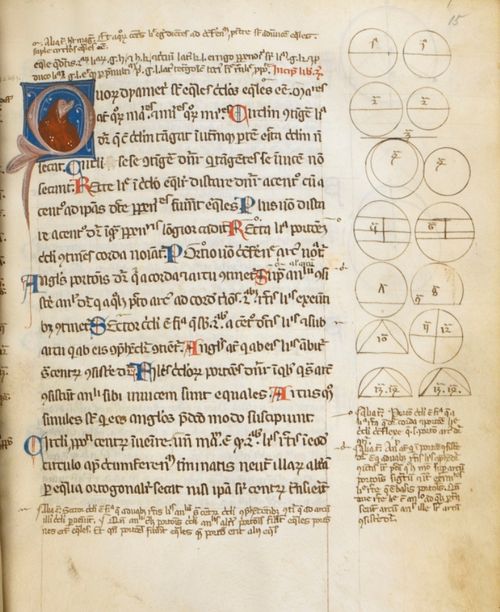
Euclid, Elements (London, British Library, MS Harley 5266, f. 15r).
Harley 5294 Pharmacopeial compilation (England, 12th century)
Harley 5311 Physician's folding almanac (England, c. 1406)
Harley 5325 Helperic of Auxerre, Computus (France or England, 11th-12th century)
Harley 5402 Astrological miscellany (Italy, 12th-14th century)
Harley 5404 Euclid, Elementa (France, 14th century)
Harley 5425 Ars Commentata (France, 13th century)
Harley 5771 Samuel Morland, Élévation des eaux par toute sorte de machines reduite à la mesure, au poids, à la balance (France, 1683)
Harley 6001 Thomas Harriot, Mathematical notes (England, 1621-1654)
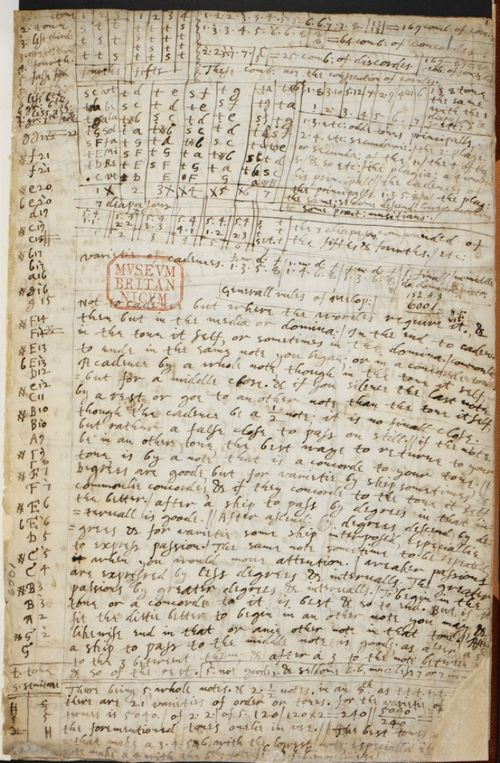
Thomas Harriot, Mathematical notes (London, British Library, MS Harley 6001, f. 1r).
Harley 6002 Thomas Harriot, Mathematical notes (England, 1621-1654)
Harley 6046 Commentaries on works of Aristotle and Johannes de Sacro Bosco (?Netherlands, 1605-1606)
Harley 6083 Charles Cavendish, Mathematical papers (England, 1621-1654)
Harley 6258B Medical miscellany (England, 12th century)
Harley 6331 Works of Aristotle (Italy, 14th century)
Harley 6398 Boke of Marchalsi (England, 15th century)
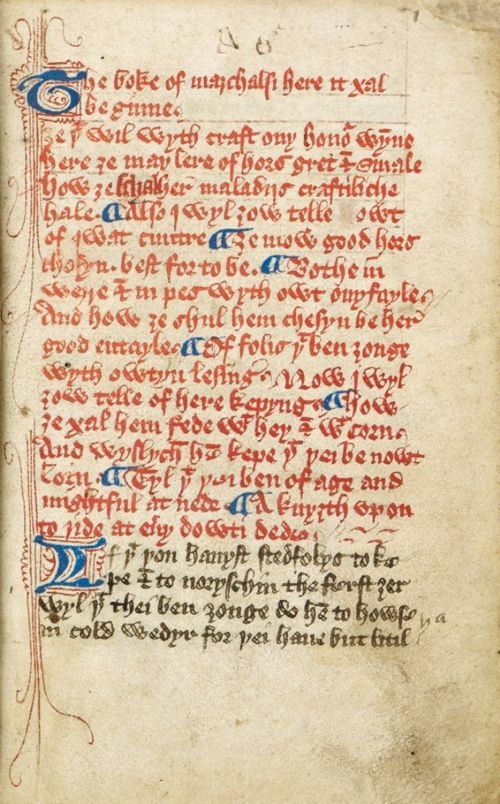
Boke of Marchalsi (London, British Library, MS Harley 6398, f. 1r).
Harley 6485 The Rosie Crucian Secrets attributed to John Dee (England, 1713)
Harley 6858 Thomas Hobbes, The Elements of Law, Natural and Politic (England, 17th century)
Harley 6878 Astronomical and astrological texts (France, 17th century)
Harley 7656 Mathematical and philosophical fragments (England, France and Italy, 13th-15th century)
